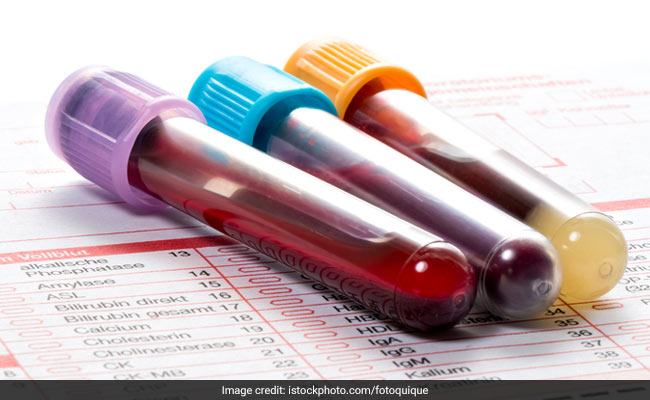Cancer dis
Cancer
What is it?
 Cancer: Is caused by an uncontrolled multiplication of cells
Cancer: Is caused by an uncontrolled multiplication of cells
Cancer is the generic term used to describe a group of disorders caused by an abnormal, uncontrolled multiplication of cells, which usually resulting in the destruction of neighbouring tissues. Gradually, these tissues and organs stop functioning and death may occur. The reasons for cells to start multiplying is unknown in most cases. They may have some inbuilt abnormality or may be affected by external influences.
There can be many many kinds of cancer like skin cancer, lung cancer, stomach, oral cancer, blood, protate etc. and the symptoms vary depending on the kind.
What are the common terms associated?
Since cancer is a group of disorders, there are some terms commonly used in the description of the disease.
- Oncology – 'onco' meaning 'cancer', oncology is the study of various types of cancers.
- Tumour – a lump resulting from an uncontrolled growth of cells which may be malignant or benign.
- Malignant – a growth of cells that destroys the surrounding tissue and spreads to other parts of the body.
- Benign – a growth of cells that is not cancerous.
- Both benign and malignant growths are unwanted multiplications of cells, but whereas a benign growth does not generally leave the place of its origin, a malignant growth usually destroys not only the tissue of its origin but also the surrounding ones. This is why cancers are caused due to malignant growths, which spread to all areas of the body.
- Carcinoma – a term synonymously used with cancer. But carcinomas are specifically malignant tumours mostly forming on the outlines (epithelium) of the affected organ. It is the most frequently occurring form of cancer.
- Sarcoma – another form of cancer where specifically the connective tissue (that which supports the various parts of the body), is affected. It is a malignant form and cancers of the blood, lymphatic system, bone and the like, fall under this category.
What are the symptoms?
 Cancer Symptoms: These may vary with the type and intensity of cancer
Cancer Symptoms: These may vary with the type and intensity of cancer
Cancers appear in many different ways. Most often they are noticed as a lump or growth in some part of the body. This is the case with tumours that form on the outlines of organs. When the cancerous growth is not physically identifiable, there may be other revealing symptoms depending on the form of cancer and the affected organ.
Cancer in the brain may have symptoms like headache, vomiting, difficulty in walking, paralysis and memory problems. Tumours of the intestine can present problems in bowel movements and pain in the stomach. Lung cancers may be manifested by difficulty in breathing and cough. Cancers of the breast are detected as a painless lump. There may also be some deformity of one or both breasts in some cases.
Some malignant tumours are manifested by abnormal bleeding from the affected organ. For example, cancer of the intestine may result in loss of blood in stools. Similarly, lung cancer may be detected when the patient passes blood in the sputum. Pain, as popularly believed, is not a common symptom of cancer. It only occurs in some cases where a nerve is pressed due to rapid enlargement of a tumour.
Other symptoms that may be common to all forms of cancer are a lack of appetite, unexplained loss of weight, general feeling of weakness and fatigue and increased proneness to infections. These symptoms shouldnt be ignored by men and women. Always consult your doctors if you see any such symptoms.
How is the diagnosis made?
In case blood is passed in stools or cough, the patient should see a doctor. For confirmation, a biopsy of the affected organ is done. In this procedure, a small part of the tissue is taken for laboratory testing to detect the presence of cancerous cells.In case of cancer of the lungs, liver, stomach or intestine, an X-ray or ultrasound of the area may be taken. CT scans of the organs may also be done for diagnosis. The diagnosis is always made keeping in mind the patient's previous medical history.
What is the treatment?
Treatment is most effective if the cancer is detected early. Chemotherapy is the most common method of treatment for cancer that has spread to other parts of the body. In this procedure, the malignant cells are destroyed with the help of powerful chemicals like methotrexate and vincristine which are given intra-venously i.e. directly injected into the veins. This procedure requires a hospital stay for the duration of therapy. It is also associated with various side effects like loss of hair, nausea, vomiting, loss of appetite and weakness for some days.For a tumour that has not spread, radiotherapy or radiation, or surgery may be done. In the former, the cells are destroyed with the help of strong radioactive waves. The exact position of the tumour is marked and the area is exposed to radiation under strictly controlled conditions. This treatment is given in breaks and in pre-determined doses. Tumours that develop in organs under hormonal control like the breast, thyroid or prostate, may also be treated with endocrine therapy. In this treatment, either the source of the hormone is removed or anti-hormone drugs are given. This treatment scores over chemotherapy because it usually has less severe side effects. But the doctor decides the best course of treatment depending on the diagnosis of the form of cancer.
Also read: A wholistic approach on cancer treatment can be most beneficial
Cancer News More News
- Urgently Address Gaps In Cancer Care: WHO
- Low-Calorie Diet, Mild Exercise May Improve Survival For Leukemia Adolescents: Study
- Elevated Heart Disease Risk Faced By Cancer Survivors: Study
- Vitamin D Supplements Can Reduce Cancer Risk, New Study Finds; Know How You Can Get Adequate Vitamin D
- AI Can Detect Blood Cancer With High Reliability
- A Healthy Diet May Prevent Nutritional Problems In Cancer Patients, Says Study
- Saliva Test Can Detect Mouth, Throat Cancer Early
- Even One Drink A Day May Increase Cancer Risk, Says Study
- Vaping Leaves E-Cigarette User With Rare Lung Scarring: Study
Cancer Health Photos More Photos
Cancer Videos More Videos
................... Advertisement ...................
................... Advertisement ...................
................... Advertisement ...................
................... Advertisement ...................


































